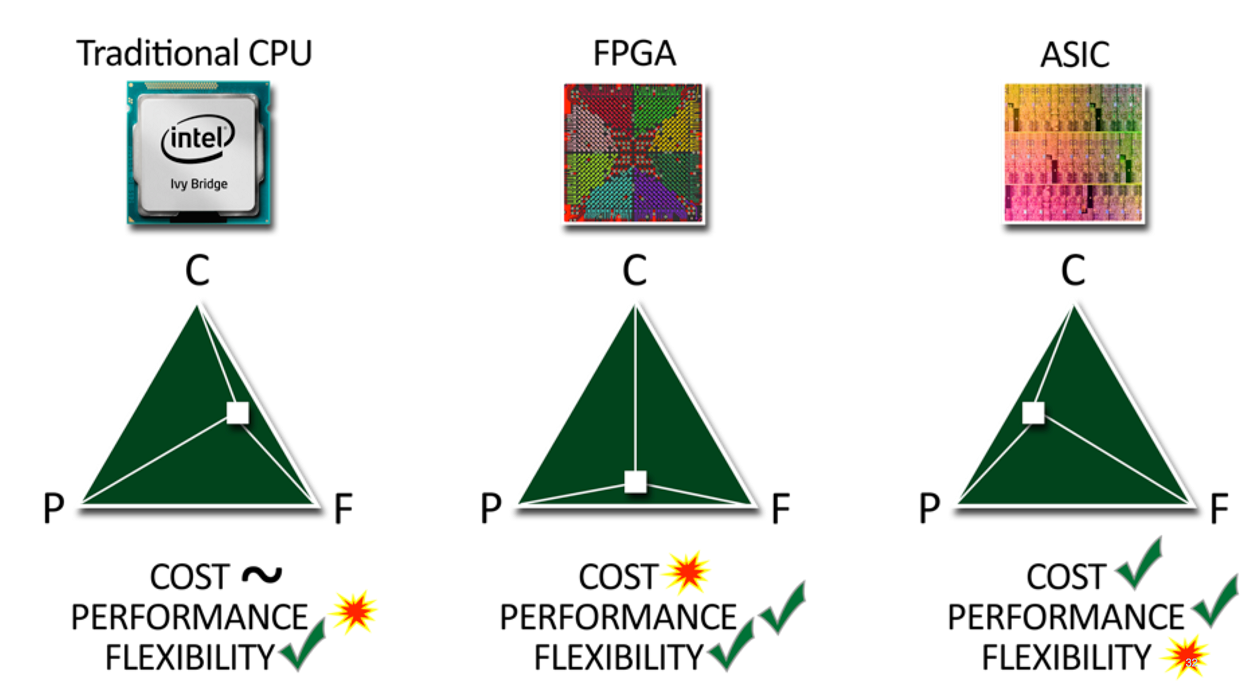Folklore #5: High Power CPU Is Better Than XXX Branded DAC Chip

Field Programmable Gate Array (FPGA) sits in the middle of the pack. The simpler nature of the FPGA strikes a balance of sort - enough specialisation to be useful (FPGAs are much better in executing parallel tasked problems than traditional CPUs), and flexibility (like CPUs, FPGAs can be reprogrammed for different applications). FPGA accepts input, process that input internally and spit out an output.
Application Specific Integrated Circuit (ASIC) is the direct opposite of a CPU. This is also the most inflexible architecture in the three because it is non-programmable. A fixed circuit, all the functionalities are baked into the design and cannot be changed. The simplest architecture of the three results in sheer speed. While the cheapest to manufacture, one can argue they are probably the most expensive to design. Like FPGA, ASIC accepts some form of input, process that input internally and spits out the output. This is the most specialised of the three and is designed to perform very limited tasks. A DAC chip (e.g. the TDA1541) is ASIC.
FPGA can be programmed to behave like a DAC (In fact people use FPGA for prototyping ASIC). FPGA gives us the flexibility to implement a DAC, plus the ability to adapt to new input streams in the future (future proofing). The inflexibility and high development costs of ASIC now placed it at a huge disadvantage compared to FPGA.
Computers, being “too general purpose” cannot do digital to audio conversion on it’s own. Today computers are used in tandem with a DAC to add additional horsepower processing when playing back digital audio (e.g. filtering, real time PCM to DSD conversion, etc).


